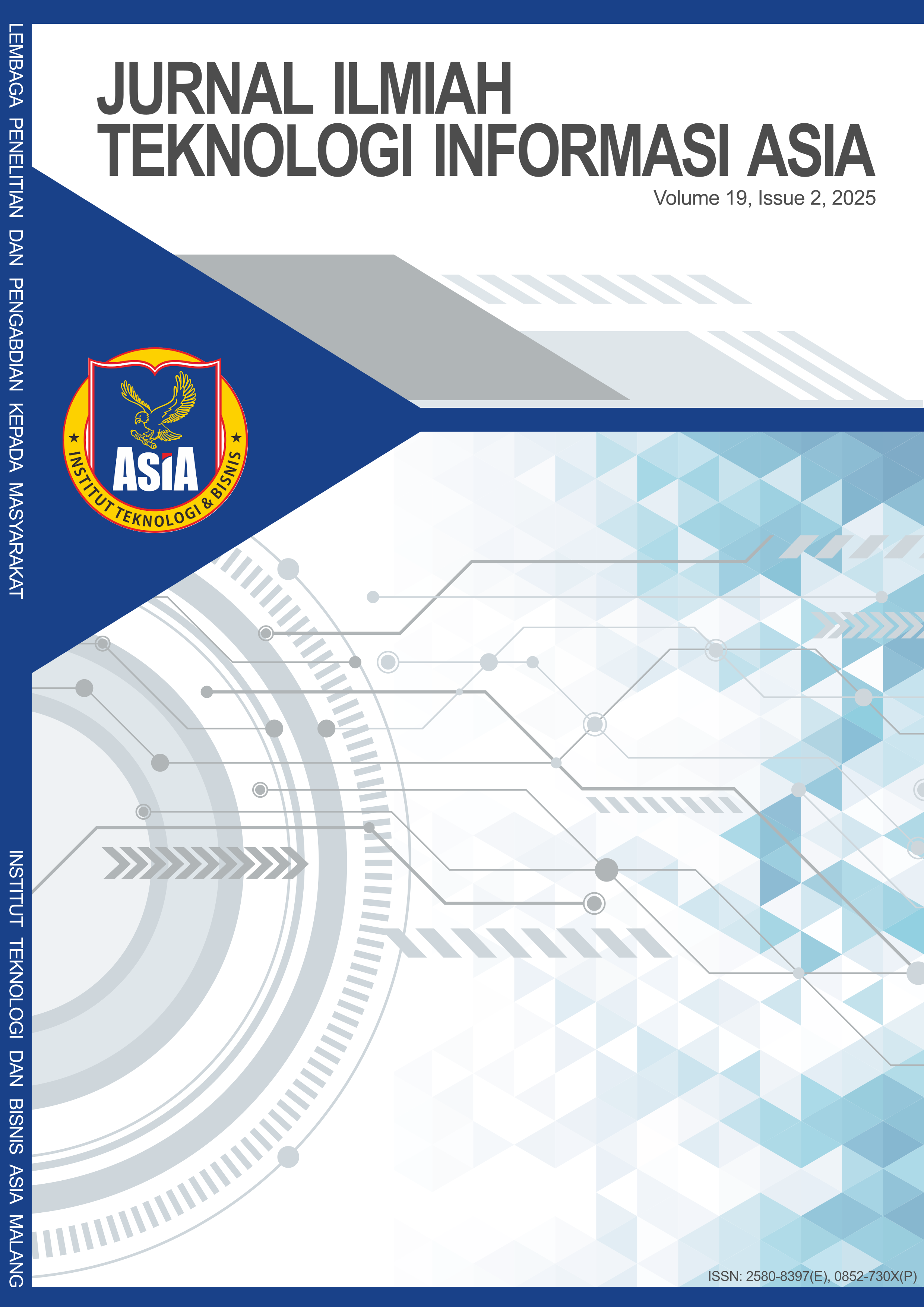Analysis of User Experience on the Lazada Platform Using the Honeycomb Model
DOI:
https://doi.org/10.32815/jitika.v19i2.1069Keywords:
customer ease-of-use, lazada platform, user experience, ux honeycombAbstract
This paper aims to examine the User Experience (UX) on the Lazada e-commerce platform through the UX Honeycomb model. Enhancing the shopping experience, from finding items to completing purchases, is a crucial element for e-commerce platforms. In today's competitive e-commerce landscape, improving UX quality has become a key differentiator directly impacting user retention and satisfaction, especially for Lazada. The UX Honeycomb's seven aspects—useful, usable, desirable, findable, accessible, credible, and valuable—are essential for Lazada to maintain its market position and foster lasting customer relationships. This study gathered information from a survey of 50 participants. The survey revealed that Lazada's interface is considered usable due to its user-friendly design and various digital payment options. For the useful aspect, the product recommendation feature was found to be helpful for locating items that meet specific needs. However, the desirable aspect requires improvement, as Lazada's visual appeal was not considered engaging enough. The findable aspect is well-addressed by an efficient and straightforward search function. While the accessible aspect shows progress with an intuitive design, further support for users with physical or sensory impairments is needed. The credible aspect received positive feedback, with user reviews and comprehensive product descriptions building trust. Finally, the valuable aspect is evident through discount programs, vouchers, and flash sales that offer financial advantages. Therefore, the UX Honeycomb framework offers valuable insights into Lazada's continued efforts to create a seamless and fulfilling user experience.
Downloads
References
Asyifah, A., Syafi’i, A., Hanipah, H., & Ispiyani, S. (2023). Pengembangan Aplikasi E-Commerce untuk Peningkatan Penjualan Online. Action Research Literate, 7(1), 70–75. https://doi.org/10.46799/arl.v7i1.188
Badriyah, T., Fernando, R., & Syarif, I. (2018, March 8). Sistem Rekomendasi Content Based Filtering Menggunakan Algoritma Apriori. Konferensi Nasional Sistem Informasi (KNSI) 2018.
Berlilana, Wahid, A. M., Fortuna, D., Saputra, A. N. A., & Bagaskoro, G. (2024). Exploring the Impact of Discount Strategies on Consumer Ratings: An Analytical Study of Amazon Product Reviews. Journal of Applied Data Sciences, 5(1), 158–172. https://doi.org/10.47738/jads.v5i1.163
Butkovic, A., Mcardle, G., & Bertolotto, M. (2023). A Framework to Measure User Experience of Geoportals. https://www.researchgate.net/publication/377151521
Deac, L. (2014). Modern Web Design Techniques - A Practical approach. Turku University of Applied Sciences.
Fatah, D. A., & Ayu Mufarroha, F. (2022). Perancangan Antarmuka Pengguna Sistem Informasi Akademik Berbasis Wireframing. Jurnal Simantec, 11(1), 97–106. https://doi.org/10.21107/simantec.v11i1.19739
Hafidz, I. A., Syafei, M. M., & Afrinaldi Rolly. (2021). Survei Pengetahuan Siswa Terhadap Pembelajaran Atletik Nomor Lompat Jauh di SMAN 1 Rengasdegnklok. Jurnal Literasi Olahraga, 2, 104–109.
International Organization for Standardization. (2019). Ergonomics of human-system interaction – Part 210: Human-centred design for interactive systems (ISO 9241-210:2019). https://www.iso.org/standard/77520.html
Kurniawan, Y., Purwanti, A., & Kurnita, S. E. (2020). Analisis Kualitas Pelayanan Dalam Meningkatkan Kepercayaan Dan Keputusan Pembelian Konsumen PT Mitra Beton Mandiri Pekanbaru. Jurnal Ekonomi KIAT, 31(2), 69–78.
Lestari, P., & Anggraini, F. (2018). Pengaruh Web E-Commerce, Kualitas Produk dan Kualitas Layanan terhadap Kepuasan Konsumen. Sosio E-Kons, 10(1), 87. https://doi.org/10.30998/sosioekons.v10i1.2411
Morville, P. (2004). User Experience Design. Semantic Studios. https://semanticstudios.com/user_experience_design/
Muchlis, A. F. (2023). Metode Penelitian Survei-Kuesioner untuk Kesesakan dan Privasi pada Hunian Asrama. Jurnal Lingkungan Binaan Indonesia, 12(3), 154–163. https://doi.org/10.32315/jlbi.v12i3.252
Mulyadi, M., & Gultom, A. W. (2022). Pengaruh Variasi Produk dan Sistem Pembayaran Terhadap Pendapatan Usaha Panglong Kayu di Kecamatan Muaradua. Jurnal Manajemen Bisnis Unbara, 3(2). https://doi.org/10.54895/jmbu.v3i2.1926
Mutiasanti, S., Ananta, M. T., & Az-Zahra, H. M. (2018). Evaluasi Pengalaman Pengguna Pada Aplikasi Mobile E-Commerce Di Indonesia Dengan Menggunakan UX Honeycomb. Jurnal Pengembangan Teknologi Informasi Dan Ilmu Komputer, 2(10), 3601–3608.
Pan, H., Liu, Z., & Ha, H.-Y. (2022). Perceived price and trustworthiness of online reviews: different levels of promotion and customer type. International Journal of Contemporary Hospitality Management, 34(10), 3834–3854. https://doi.org/10.1108/IJCHM-12-2021-1524
Pebiyanti, E., Fauzi, A., Husniyyah, T., Tasia, S. I., Sutendi, Z., Vitri, A. E., & Penulis, K. (2023). Pengaruh Kualitas Informasi, Persepsi Keamanan, dan Persepsi Privasi Terhadap Kepercayaan Pengguna Belanja Online (Literature Review). Jurnal Ekonomi Manajemen Sistem Informasi, 4(5), 2686–4916. https://doi.org/10.31933/jemsi.v4i5
Prayitno, A., & Safitri, Y. (2015). Pemanfaatan Sistem Informasi Perpustakaan Digital Berbasis Website Untuk Para Penulis. Indonesian Journal on Software Engineering, 1(1), 1–10.
Sauri, Moh. S., Putra, A. H., & Yossy, E. H. (2023). User Experience Evaluation on Production Performance Monitoring System Using Honeycomb Method. PIKSEL : Penelitian Ilmu Komputer Sistem Embedded and Logic, 11(1), 135–148. https://doi.org/10.33558/piksel.v11i1.6927
Setyanti, E. P. (2015). Transaksi E-commerce Indonesia Tahun Depan Diprediksi Capai $4,5 Miliar. Tech in Asia. https://id.techinasia.com/transaksi-ecommerce-indonesia
Siek, M., & Fariz, F. H. (2023). Analysis of User Experience on Short Video Services: Instagram Reels and Tiktok Comparison. 2023 International Conference on Information Management and Technology (ICIMTech), 819–824. https://doi.org/10.1109/ICIMTech59029.2023.10277782
Sigar, C., Haidar, K., & Astuti, R. F. (2022). Analisis Persepsi Kemudahan Penggunaan E-Commerce di Kalangan Mahasiswa Pendidikan Ekonomi. Jurnal Prospek: Pendidikan Ilmu Sosial Dan Ekonomi, 4(2), 53–61. https://doi.org/10.30872/prospek.v4i2.2233
Simanjuntak, S. (2018). Analisis Pengalaman Pengguna (User Experience) Enterprise Resource Planning (ERP) Menggunakan User Experience Questionnaire (UEQ) (Studi Kasus: SAP Modul Sales & Distribution, Material Management, Fianancial Accounting) [Institut Teknologi Sepuluh Nopember]. https://repository.its.ac.id/49487/
Siswanto, C. A., Indradewi, A. A., Emmanuella Pallo, K. X., & Purba, A. Z. (2022). Perlindungan Konsumen Terhadap Pembelian Obat Mengandung Psikotropika Pada Online Marketplace. Jurnal USM Law Review , 5(2), 553–568. https://doi.org/10.26623/julr.v5i2.5337
Sugiyono, S. (2014). Metode penelitian pendidikan : pendekatan kuantitatif, kualitatif, dan R&D (Cet. 19). Alfabeta.
Suseta, P., Rokhmawati, R. I., & Brata, K. C. (2019). Evaluasi Pengalaman Pengguna pada Aplikasi E-Commerce Tapp Market Menggunakan Parameter UX Honeycomb. Jurnal Pengembangan Teknologi Informasi Dan Ilmu Komputer, 3(6), 6191–6199. https://j-ptiik.ub.ac.id/index.php/j-ptiik/article/view/5677
Syahidi, A. A., & Tolle, H. (2021). Evaluation of User Experience in Translator Applications (Banjar-Indonesian and Indonesian-Banjar) Based on Mobile Augmented Reality Technology using the UX Honeycomb Method. Journal of Games, Game Art, and Gamification, 6(1), 7–13. https://doi.org/10.21512/jggag.v6i1.7430
Vivakaran, M. V., & Neelamalar, M. (2015). From Spectators to Users: A study on the transformation caused by the Social media in the Indian Media Context. Bloomsbury. https://www.researchgate.net/publication/315686284
Wiwesa, N. R. (2021). User Interface dan User Experience untuk Mengelola Kepuasan Pelanggan. Jurnal Sosial Humaniora Terapan, 3(1). https://scholarhub.ui.ac.id/jsht/vol3/iss2/2/
Additional Files
Published
How to Cite
Issue
Section
License
Copyright (c) 2025 Jurnal Ilmiah Teknologi Informasi Asia

This work is licensed under a Creative Commons Attribution 4.0 International License.
Upon acceptance for publication, authors transfer copyright of their article to Jurnal Ilmiah Teknologi Informasi Asia. This includes the rights to reproduce, transmit, and translate the material in any form or medium.
While the editorial board endeavors to ensure accuracy, they accept no responsibility for the content of articles or advertisements. Liability rests solely with the respective authors and advertisers.
Website material is licensed under a Creative Commons Attribution 4.0 International License (CC BY 4.0). Under this license, users are free to share and adapt the material for any purpose, including commercial use, provided license terms are met. These freedoms are irrevocable by the licensor under such conditions.














